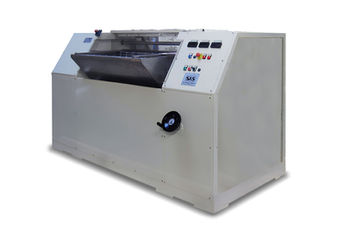ROLL MILLS
A Soap ROLL MILL refines soap by applying pressure and shear forces to improve texture. Our new mills use advanced materials and efficient cooling, enhancing performance and consistency while addressing maintenance and power issues.

A Soap Roll Mill plays a crucial role in the soap refining process by improving the texture and consistency of the soap through mechanical action. The mill works by passing soap through a set of precision-engineered rolls, which apply a combination of pressure and shear forces to the soap mass, effectively enhancing its plasticity and smoothness.
In our new generation of Soap Roll Mills, we've eliminated the typical issues of older designs, such as difficult maintenance, outdated gear transmissions, and inefficient power distribution from independently driven rolls. Instead, we incorporate the latest advancements in roll metallurgy, manufacturing techniques, and efficient cooling systems, ensuring easy gap settings and a strong, durable structure for reliable, long-term use.
The milling process consists of two main actions:
-
Soap Stretching: As the soap passes through the rolls, the difference in speeds between them causes the soap fibers to slide over each other, creating a shear effect that stretches the fibers and contributes to a more flexible, pliable soap mass.
-
Soap Lamination: The rolling action thins the soap into delicate flakes, simultaneously breaking down any unhomogenized ingredients or dry specks. This reduces the granulometry, leading to a more uniform texture and appearance.
The combination of these actions results in a smoother, more refined soap, free of inconsistencies and ready for further processing or molding. This advanced roll mill design ensures better control over the soap's final quality, making it ideal for high-performance soap production.

KEY FEATURES OF ROLLS
We use rolls with a 3.5 L/D ratio instead of the traditional 2.5 L/D, providing better heat transfer due to a larger surface area. To support these longer rolls, we ensure higher structural strength through a special design. The core consists of a solid carbon steel shaft, with cooling channels and bearing seats directly machined into it. A pre-machined steel cylinder is shrunk onto the core and welded. The external surface is coated with a thick layer of martensitic stainless steel hardened to 50 HRC and ground to a 0.4 roughness, ensuring long-lasting, trouble-free operation. This results in an exceptionally strong and rigid roll.






